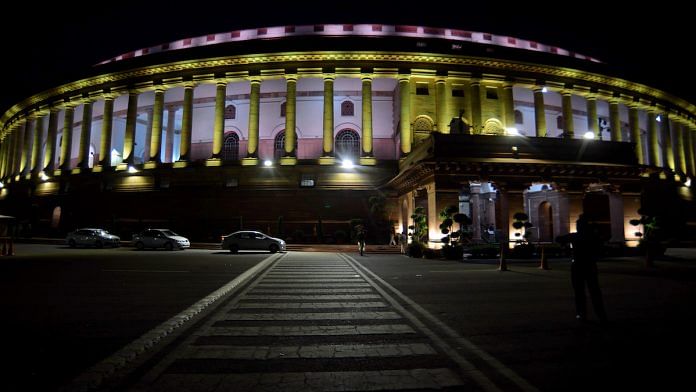Even as many of the provisions of the 42nd Constitutional Amendment enacted in 1976 when Indira Gandhi was at the helm during the Emergency years were repealed by the 43rd and 44th Amendments by the Janata government under Morarji Desai, the decision to defer the delimitation of constituencies for Parliament and state assemblies was not. There was a rare consensus among all political parties that states which had implemented the family planning norms should not be placed at a disadvantage on account of the demographic bulge of the states where the population growth was way ahead of the national average.
The southern states were especially concerned as Kerala, Tamil Nadu, Karnataka, and Andhra Pradesh, including the Telangana region, would lose MPs, not just in relative, but even absolute numbers if a national norm on the number of electors per MP was to be accepted, thereby leading to the political marginalisation of the south, and the consolidation of the Hindi speaking states.
As such Articles 82 and 170 were amended to impose a moratorium on the number of seats allocated to states and fixing of boundaries of constituencies until the publication of 2001 Census figures. However, in 2001, the 84th Constitutional Amendment extended the freeze on the number of constituencies by another 25 years – to 2026.
Also read: Lok Sabha strength to be increased to 1,000 from 543? Here’s how it can be done
Problems – from population to J&K
The ‘freeze on constituencies’ led to another set of problems. Over the years, the proportion of Scheduled Caste and Scheduled Tribe population, relative to the general population, grew from 15 per cent to 16.6 per cent, and 7.5 to 8.6 per cent respectively. As per the mandate of Article 330 of the Constitution read with Section 3 of the Representation of People Act, 1961, the number of seats to be reserved for them had to be adjusted. This was the context in which the 87th Amendment was brought to the statute book to rectify the anomaly.
A Delimitation Commission under Justice Kuldeep Singh was tasked with the following mandate: “While the total number of existing seats as allocated to various states in the ‘house of the people’ (the Lok Sabha) and state assemblies on the basis of 1971 Census shall remain unchanged till the first census to be taken after the year 2026, the number of seats to be reserved for the scheduled castes and scheduled tribes in the Lok Sabha and state legislative assemblies shall be reworked on the basis of the 2001 Census, and each shall be ‘re-delimited’ into territorial parliamentary and assembly constituencies on the basis of the 2001 Census, and the extent of such constituencies as delimited now shall remain frozen till the first census to be taken after the year 2026.”
The freeze was only on the number of seats per state. Within the state, constituencies could still be reorganised to account for changes in population density, (new) district, subdivision and block boundaries, and administrative convenience. In Uttarakhand, for example, when the first elections were held, 42 seats were assigned to hill constituencies, and 28 to the plains, but it is now 36 and 34, thereby making the highlanders less salient than before.
After the Reorganisation of Jammu and Kashmir Act of 2019, the state was reconstituted as the UTs of Ladakh and J&K. A Delimitation Commission was established under Justice Ranjana Desai to delimit constituencies in J&K on the basis of the 2011 census. Based on this, Jammu will have 43 and Kashmir will have 47 seats in the assembly, and for the first time, nine seats will be reserved for Scheduled Tribes and seven for Scheduled Castes. Another 24 seats have been kept for constituencies in Pakistan-occupied Kashmir (PoK). The commission has been critiqued for the disparity in the electors for constituencies; while in Jammu there is one legislator for 1.25 lakh people, for Kashmir, the figure is 1.45 lakh.
Also read: Why Kashmir parties claim ‘Hindu bias’ in delimitation proposal, which adds 6 seats in Jammu
A second chance
As we approach 2026, it is important that we start looking at issues and challenges that the next round of delimitation will pose. The most glaring factor is that of asymmetry among states with regard to the number of MPs in the Lok Sabha. Going by the current demographics, a state like Uttar Pradesh will have a three-digit representation, while for most states in the Northeast, the number will be in the singular. Then there is the issue of massive outmigration of SCs and STs to urban areas, where their numbers are so dispersed that reserving constituencies for them becomes difficult. We will also have to reckon with the very large number of migrant voters, and some parity between urban and rural constituencies.
Maybe this is the opportune time for a second and more comprehensive reorganisation of states to address these issues. While the first States Reorganisation Commission (SRC) had a jurist, Justice Fazal Ali, a parliamentarian, HN Kunzru, and a diplomat, KM Pannikar, the second SRC should be broader-based, and have more time and resources at its disposal to carve out the internal borders and constituencies of Bharat.
Sanjeev Chopra is a historian and Festival Director of Valley of Words. Till recently, he was the Director of the Lal Bahadur Shastri National Academy of Administration. He tweets @ChopraSanjeev. Views are personal.
This article is the second part of the ‘State of the State‘ series that analyses policy, civil services, and governance in India.
(Edited by Neera Majumdar)



